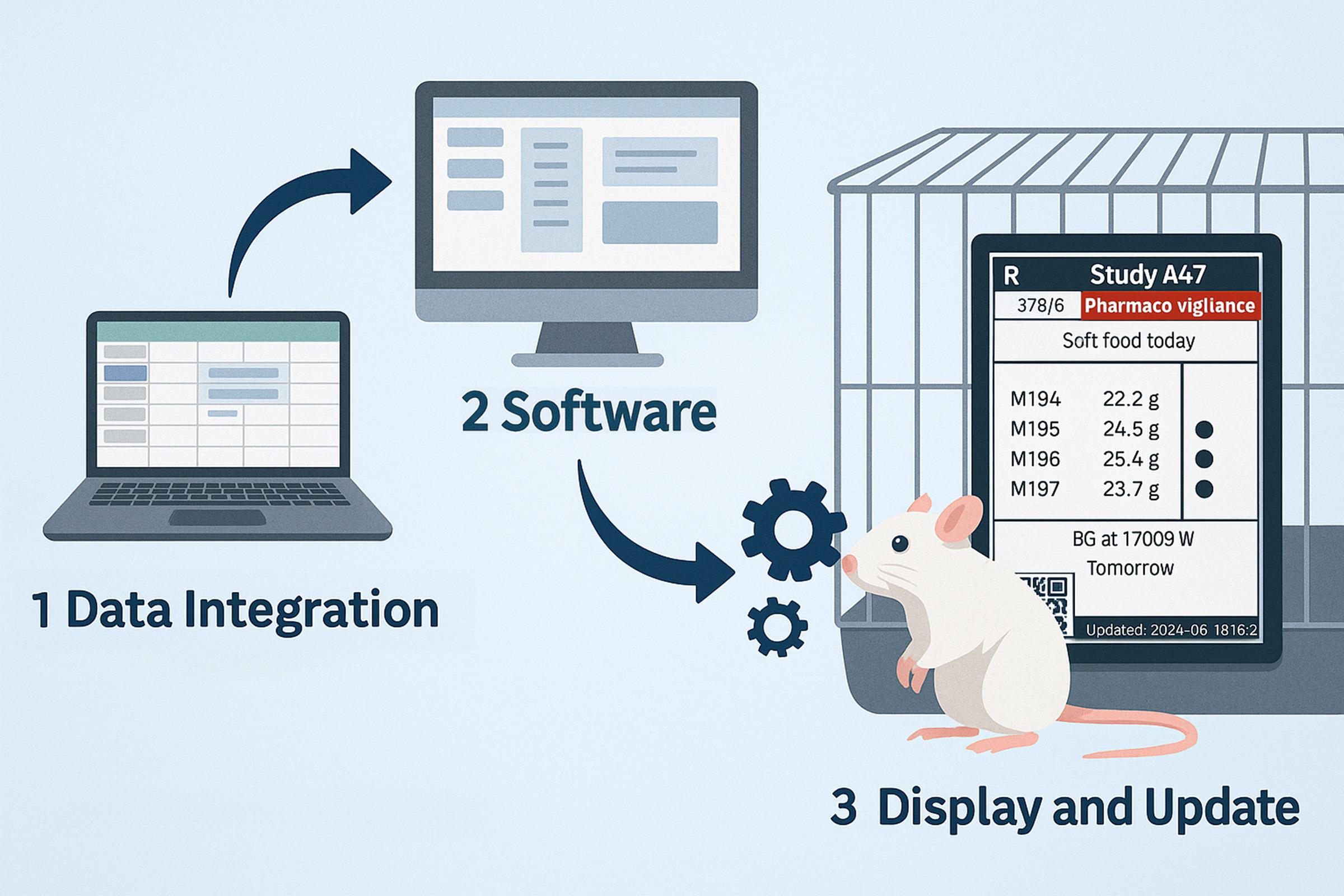PicoTeam’s Digital Cage Cards Solution uses a 3-step process to integrate data, format it for display, and provide real-time updates
Introduction
In the ever-evolving field of animal research, precision, efficiency, and accuracy are paramount. Traditional paper-based cage cards have long served as the cornerstone for tracking and managing animal information in research facilities. However, these methods come with inherent limitations, such as susceptibility to errors, misplacement, and lack of real-time updates. Recognizing these challenges, PicoTeam has developed an innovative solution: Digital Cage Cards. This article aims to explain how PicoTeam’s new digital cage cards transform animal research facilities, offering researchers a more reliable, efficient, and sustainable way to manage animal data.
What are Digital Cage Cards?
Digital Cage Cards are electronic displays that replace traditional paper-based cage cards. Utilizing e-paper technology, these digital cards offer high-contrast, high-resolution displays that are easily readable. Mounted on or near animal cages, they provide essential information about the animals, including identification numbers, study details, health status, and more.
How Do Digital Cage Cards Work?
The operation of PicoTeam’s Digital Cage Cards can be broken down into three simple steps:
1. Data Integration
The system software collects and organizes animal data from existing animal management systems or structured data sources such as Excel. This ensures that all necessary information about the animals and their housing is accurately captured. The system is designed to integrate effortlessly with your existing animal management systems or other structured data sources, ensuring a smooth transition to digital cage cards without disrupting ongoing operations.
2. PicoTeam’s Digital Cage Card Software
The Gateway System formats the collected data into a predefined card design template. This processed information is then sent to the digital cage cards via the Gateway System, ensuring the information is displayed correctly. The Gateway System acts as a bridge between your data sources and the digital cage cards, processing and formatting the data for accurate display.
3. Display and Update
The digital cage cards display the updated information using e-paper technology. This technology allows the display to retain the image without requiring continuous power, ensuring the information remains visible and accessible at all times. The digital cage cards communicate wirelessly with the Gateway System, eliminating the need for extensive cabling and infrastructure modifications. This wireless setup ensures reliable and continuous operation without relying on external internet access.
Key Benefits of Digital Cage Cards
Digital cage cards offer several advantages over traditional paper-based systems, including:
1. Improved Data Accuracy and Accessibility
Digital Cage Cards reduce the risk of human errors associated with handwritten updates and misplaced cards. By integrating with existing systems, data can be updated in real-time, ensuring that the most accurate and current information is always available.
2. Enhanced Animal Welfare
Real-time access to animal health status, treatments, and other welfare-related information allows for quicker, more informed decision-making. This ensures that animals receive the best possible care and that any issues are addressed promptly.
3. Increased Operational Efficiency
The automation of data updates saves time and resources. Staff can quickly and easily access and update information, eliminating the need for manual handling of paper cards.
4. Environmental Sustainability
Transitioning to digital cage cards significantly reduces paper waste, supporting more sustainable and environmentally friendly practices in animal research facilities.
5. Customization and Flexibility
PicoTeam’s solution allows for extensive customization of the information displayed on each cage card. Using a web-based editor, researchers can create and modify templates to meet specific needs and regulatory requirements. This flexibility ensures that each card provides relevant and accurate information tailored to different stages of research or care.
Conclusion
PicoTeam’s Digital Cage Cards offer a practical and efficient solution for the digital transformation of animal research facilities. These digital cards provide a reliable, flexible, and accurate system for managing animal data, enhancing operational efficiency, improving animal welfare, and supporting environmental sustainability. Seamless integration with existing systems and extensive customization options make PicoTeam’s solution a valuable tool for modernizing animal research practices.


